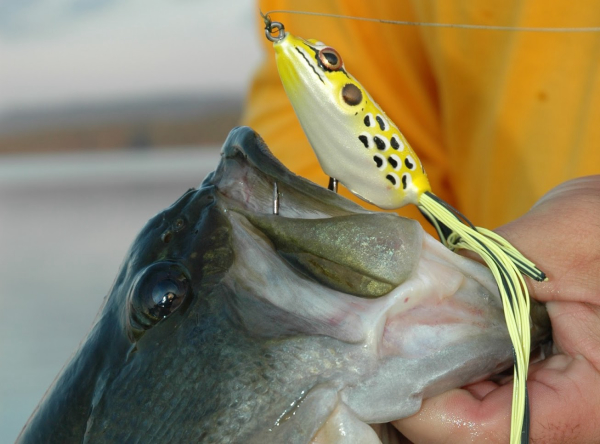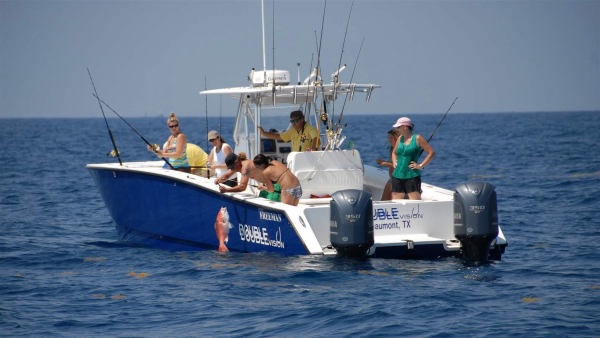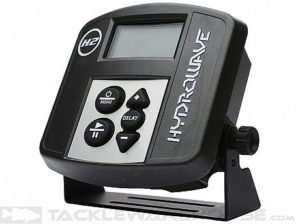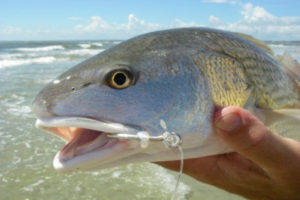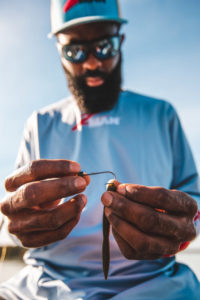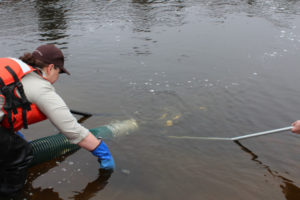How and Where to Catch December Bass at Bartlett’s Ferry/Lake Harding
with Tommy Gunn
By this time of year lake waters are getting cold and bass are not feeding as good as they did earlier in the fall. Colder water means they are less active and more likely to be holding in deeper water. But a few warm days can turn them on and you can have some excellent fishing before the weather really gets harsh.
Some lakes seem to be better now and Bartlett’s Ferry on the Chattahoochee River below West Point is one of them. Also called Lake Harding, the water levels stay fairly consistent because it is a small lake at 5850 acres and generation at West Point keeps it full. The level can change a couple of feet each day but you will seldom see it more than three feet low.
Bartlett’s Ferry is an old lake that started producing power in 1926. It was bought by Georgia Power in 1930 and it is still owned and operated by them. The shoreline is mostly rocky, steep banks on the old river in the lower lake with some creeks offering different kinds of structure over the whole lake. The river above Halawakee Creek has steep outside bends and mud flats. Almost all the shore is lined with cabins and docks.
For a long time Bartlett’s Ferry was known for its largemouth but spotted bass have come on strong there. In the Georgia Bass Chapter Federation Creel Census Report in 1996 just under 63 percent of bass were largemouth but by 2005 that was down to 48 percent. The population of spots is probably even higher than that indicates since spots are often culled for largemouth in tournaments.
In the Alabama Bass Anglers Information Team report for 2006 angler success rate at Bartlett’s Ferry was seventh highest of all lakes in the report. But it ranks low on the chart overall due to the average size of the fish caught. You can catch a lot of bass at Bartlett’s Ferry but they will mostly be smaller spots.
The good news is now is the time to catch a lot of bass there and you can bring in some quality largemouth if you fish it right. There is little of the boat traffic that plagues the lake during warmer months and you can fish in peace. Add to that the varied structure and cover and Bartlett’s Ferry is a good choice for this time of year.
Access to the lake is fair with a public ramp on the Georgia side at Idlehour and a public ramp on the Alabama side at Long Bridge. There are other ramps but these are open year round and have a decent amount of parking. There are a good many club tournaments on the lake and a weekly pot tournament goes out of Long Bridge ramp.
Tommy Gunn lives about ten minutes west of Bartlett’s Ferry in Cusseta. He started fishing Bartlett’s Ferry in the mid 1980s with his cousin and they fished many of the pot tournaments there over the years. He still fishes them and also fishes the Bassmaster Weekend Series, placing 7th overall in the Alabama South division in 2007.
Tommy agrees the size of the fish has gone down in the past ten years. His best tournament catch ever was a seven fish limit weighing 28 pounds in the mid 1990s but his best catches for the past few years in the tournaments has been five fish limits weighing 17 to 18 pounds. He landed a nine and one quarter pound largemouth in the 1990s, his best from Bartlett’s Ferry, but has not seen many over eight pounds recently.
Not only does he fish as often as possible, Tommy also makes Jawbreaker Jigs. He got started making them so he could have the colors he wanted but could not find. His jigs are sold in many stores in the area around Bartlett’s Ferry and he makes both skirted jigs and plain jigs for jig head worm fishing.
“I like to fish shallow, there are almost always some fish in shallow water here,” Tommy told me. As long as the water is above 55 degrees he is confident he will have a good catch in shallow water this time of year and he sticks with it until the water gets below 50 degrees. Then it is time to go deeper.
Since he is fishing tournaments Tommy is looking for five good bites. For numbers of fish he would go deeper and catch mostly spots, but he wants largemouth for weigh-in. You can catch fish both ways now at Bartlett’s Ferry and a couple of simple patterns will put you on fish.
For shallow fishing Tommy concentrates on docks. There are hundreds to choose from on Bartlett’s Ferry and many of them hold quality largemouth, and some good spots, right now. Tommy will flip and pitch a jig and pig to docks for bigger fish and throw a crankbait between docks as he moves from one to another.
Some docks are better than others. Tommy likes an older dock with wooden post and some brush or rocks under it. The best ones this time of year are at the mouths of pockets and sloughs. They must be near deep water to hold good fish and that is the most important factor. If there is not seven feet of water just off the end of the dock and much deeper water nearby it will not be as good.
Most of his dock fishing is done with a three eights ounce Jawbreaker jig in warmer water and a quarter ounce jig in colder water. He likes a black/blue/purple or black/blue/brown combination with a green pumpkin Zoom Super Chunk on either weight. Tommy tries to put his jig as far back under docks in places that are hard to get to and that are missed by other fishermen.
If the bite is real tough Tommy will throw a green pumpkin Trick worm on a 3/16 ounce head around the docks. That bait tends to catch more but smaller fish, but will sometimes get hit when bigger baits are ignored.
In deeper water Tommy likes a point or hump that drops off steep into the old river or creek channel. He will throw crank baits across it then back off and fish it with a Carolina rig or a jig head worm. He will start fairly shallow on the structure and work deeper until he finds fish. Rocks or brush on the structure help hold the fish in specific areas.
If the water is 15 feet deep or deeper where he is fishing Tommy will also jig a spoon for the fish. Sometimes you have to jig a spoon in their face, repeatedly moving it up and down, before they will hit. If you spot fish on your depthfinder drop a half ounce spoon straight down to them.
You can pick docks to fish by starting at the mouth of every slough on the lake and hitting them. Choose older docks with post and trash and you will do better. For deeper fish the following ten spots all hold bass this time of year and are some of Tommy’s favorites.
1. N 32 41.259 – W 85 09.095 – Put in at Long Bridge and go under the bridge. Ahead of you an island sits off the right bank. Out to the left of the island a hump comes up to within 18 feet on top and has brush on it. The creek channel swings by it and it drops fast on that side. It is an excellent place to jig a spoon or drag a Carolina rig right now.
Go up toward the island and watch behind you. A long narrow point runs off the left bank going upstream just above the bridge and you want to line up the end of it with the first bridge piling on that side. When you get even with the island you will see the hump come up. It helps to drop a marker out to stay on it.
Fish all around the hump from different directions. If there is any current it will help and you want to sit downstream of the hump and throw back up across it and fish with the current. Probe for the brush and fish it carefully when you hit some.
2. N 32 41.446 – W 85 09.401 – Upstream of the island there is a point and a cove behind it. This point leads to a ridge that runs parallel to the bank on that side. Go upstream staying way off the bank, about even with the point behind the island, and watch for a gray house with two small lighthouses to the left of it when facing it. Start going back and forth out off the bank from those lighthouses and watch your depthfinder. You will see it come up quickly on the back side, topping out at about 9 feet deep, then slope off.
Set up to fish across the ridge, bringing your Carolina rig, jig head worm or jig and pig up the sharp drop. Work the ridge casting over it from both sides. Also watch for bass holding on the side or brush on the sloping side. Jig a spoon around any fish or cover you see.
There is one sweet spot on this ridge right out in front of the gray house, according to Tommy. For some reason fish often concentrate in one small area of this long ridge and you have to fish it to find them. If you catch one bass fish that spot hard, there should be more on it.
3. N 32 41.286 – W 85 09.974 – Head up toward the old railroad trestle. Where the lake narrows down look to your left and you will see the last pocket on that side before the trestle. The downstream point of this pocket runs way out, angling upstream, and is covered with rock. There is a good drop on the inside of this point where the channel from the small creek hits the point and turns.
This is a good spot to throw a Carolina rigged Baby Brush Hog or Finesse worm. Spots love this point and those baits are good for them. Tommy likes a green pumpkin bait on cloudy days and stained water or a watermelon red bait on clear days and clear water. He will dye the tails of either color with chartreuse JJ’s Magic. Spots seem to really like a chartreuse tail.
Fish across this point from both sides and work it way out. When you get out on the end make some casts from the deep end up toward the bank and fish down the point on both sides. Also throw a crankbait in the shallow part of the point when you are in near it.
4. N 32 41.234 – W 85 10.416 – Go under the trestle and you will see a big pocket open up to your right. About 75 yards off the right point of the trestle a hump comes up to within 6 feet of the surface. If you start from the point at the trestle on the right going upstream and idle toward the far upstream point of the cove on your right you should cross it. The far point has two swift houses on it, one with gourds on cross arms and the other a condo style on a post.
When you find the top of the hump stop and cast all around, working your Carolina rig, jig and pig and jig head worm from deep to shallow. There is some brush here and the channel swings by the outside of the hump, making a good drop on that side. Fish all around this spot.
5. N 32 41.484 – W 85 07.631 – Head down the creek under both bridges and past the ramp. When the creek makes a turn to your left you will see powerlines crossing the lake from a point on your right where the creek turns back right. Go under the powerlines and watch to your left. You will see a rocky point running upstream at the mouth of the big cove on that side. There is no house on the point but it has been cleared of brush under the big pine trees.
Tommy says this is an excellent point because the creek channel swings in on the outside and the ditch on the inside is deep, making that side drop fast. There is brush and rocks all around this point. Start by throwing a crankbait working around it then back off and fish a jig and pig, jig head worm or Carolina rig down the slope. Watch and feel for brush and hit it hard when you find it.
Wind often blows in on this point and makes it better. Wind blowing across any of these spots will help, as it does when blowing in on a dock. As long as you can control the boat wind makes a spot even better.
6. N 32 41.528 – W 85 06.773 – Head downstream to the mouth of the river and go on the upstream side of the first small island with a house on it. Ahead you will see a big island with a red clay bluff bank on the downstream point. That downstream point forms a flat that drops off into the river channel on the far side of the island. There is an old state brush pile out on this point that no longer has a buoy marking it.
Work all around this flat and point, fishing Carolina rigs, jig and pig and jig head worm. Throw a crankbait and jig and pig in the blowdowns on the west side of the island, too. Watch your depthfinder and drop a spoon or other bait down to any brush you see. The point will top out at about ten feet deep way off the bank then drop fast and that is where the old state brush piles are located.
7. N 32 41.645 – W 85 06.541 – Go across toward the Georgia side of the river and you will see an opening a little to your left. The downstream point of this opening is actually the upstream point of a big island. There is trash all over the top of this point. Throw a crankbait across it then work your other baits deeper. Try a jigging spoon in the deeper areas.
Current coming down the river will rush right by this point and make it much better. Tommy likes to stay on the river side of the drop and fish from shallow to deep, especially when current is moving. Wind will often blow across this point making it better, too.
8. N 32 40.986 – W 85 06.194 – Run down to Kudzu Island, the island with a standing chimney on it on your left as you head downstream. If you look right on the edge of the water out in front of that chimney, with it lined up with the tree that is out from the others, you will see the old foundation of some kind of structure. A small point runs out from this old foundation and there is more cover on it.
Stay out from the point and fish all around it with all your baits. This point drops fast and is not very big, but it holds fish. Current coming down the river often stacks fish up on it.
9. N 32 40.733 – W 85 06.177 – Across the river on the Alabama side there is a big island in the mouth of a pocket. The outside bank of the island drops straight off into the old river channel. You will be in 60 feet of water two boat lengths off the bank. There are rocks on the drop and lots of logs and blowdowns.
Tommy says this is and excellent bank to fish after a cold front and during the winter. Bass hold in the cover and can move deeper quickly. Fish a crankbait around the cover. Then work a jig and pig through the branches of the blowdowns and be ready to set the hook and reel hard to pull a big bass out of them.
10. N 32 41.192 – W 85 05.443 – Go back across the lake and head into the big creek on that side. It does not have a name on the map but Boat Club Road runs out on a point in it. Across from the point with Boat Club Road watch for point with a dead pine on your left going upstream. Just past it is a little cove with a house in it that has a turret like room on the front. The dock in the pocket has a Coke sign on it. There were two flags on this boathouse when we were there in mid-November, one a solid yellow and the other a gray/white cross flag.
There is a hump that comes up to 22 feet deep on top on the point just past the cove with the dock and flags. Find it and fish all around it with different baits you can fish that deep. A spoon is good here most of the winter. Try the top of the hump and sides as it drops off.
These are the spots Tommy will be hitting in tournaments this time of year. Try docks all over the lake if the water is still above 50 degrees for bigger largemouth then hit these deeper spots for numbers of fish, mostly spotted bass. You can find more similar spots all over the lake and they will hold bass now.
